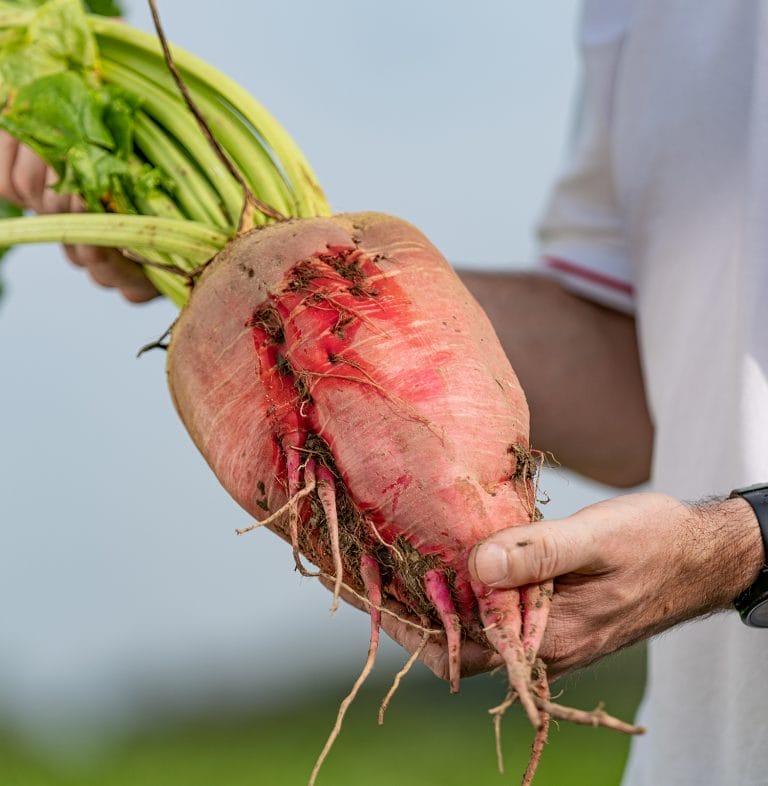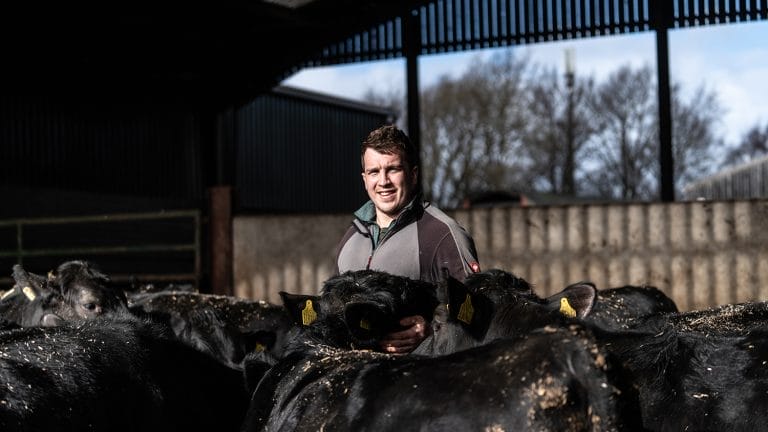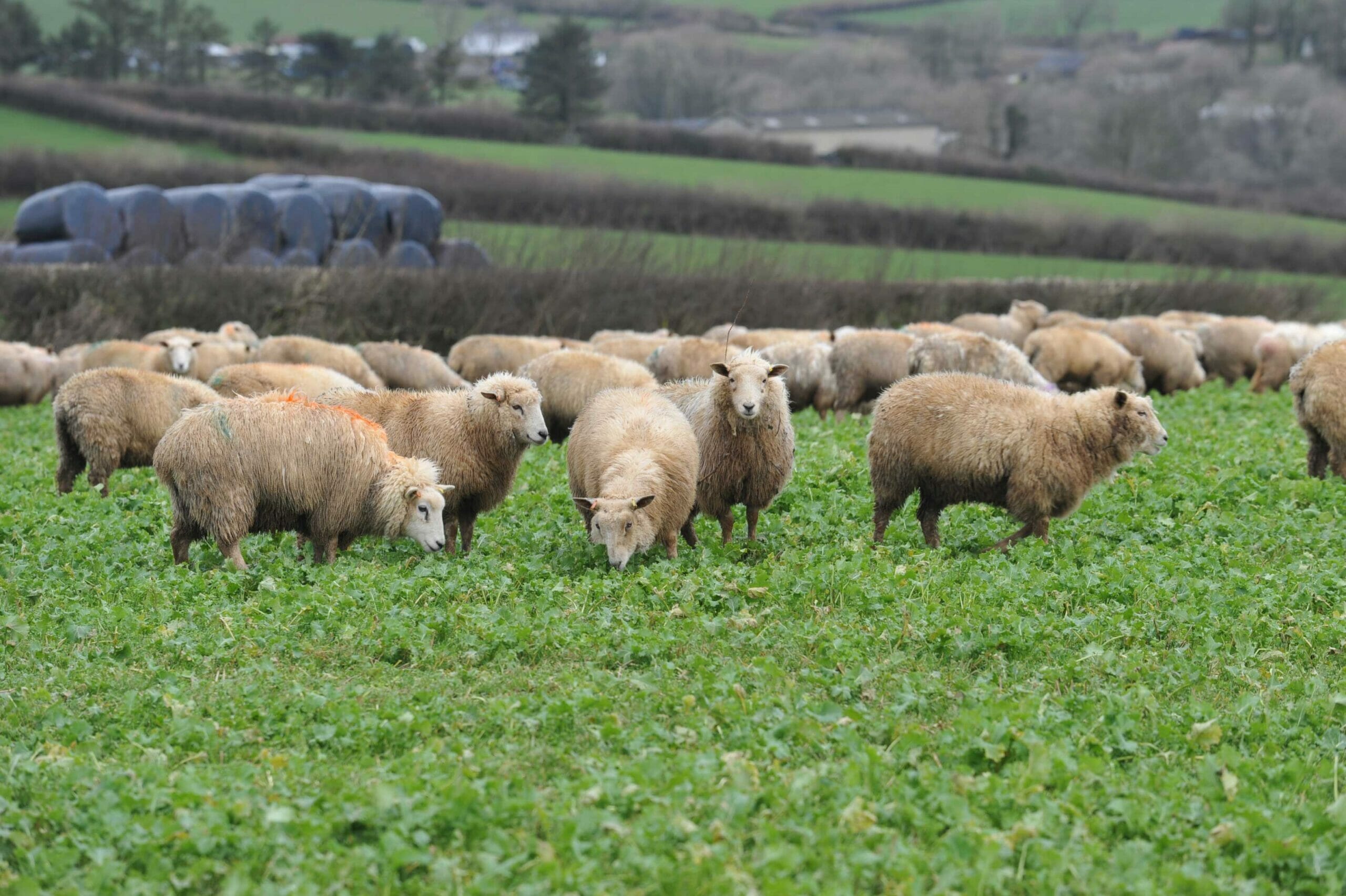
The climate is keeping us on our toes and this year (2023) has been no exception. It calls for flexibility and agility when it comes to growing forage crops. Limagrain’s forage crop manager John Spence sows some seeds of ideas on future proofing home grown feed supplies going forward.
“We’re ending the year with decent stores of grass and maize silage, but this doesn’t tell the full story,” says John Spence. “A cold late spring delayed grass growth, then for most grass silage making started well, until heavy rain arrived.
 Hot and dry conditions weren’t as extreme as 2022, but some were affected with poor grass growth, then some respite and good grass growth through a mild autumn until heavy rain put some areas under water at worst and at best caused the late sowing of forage catch crops which will certainly hamper their yield and quality.
Hot and dry conditions weren’t as extreme as 2022, but some were affected with poor grass growth, then some respite and good grass growth through a mild autumn until heavy rain put some areas under water at worst and at best caused the late sowing of forage catch crops which will certainly hamper their yield and quality.
So farmers are faced with balancing more extreme weather conditions and the drive to improve sustainability and economic viability by producing more feed value from home grown forages.
“Marrying the two is quite a challenge,” adds Mr Spence.
“Agility and flexibility are key when it comes to planning. Avoid planning everything in stone and being too rigid with the cropping.”
Forage choices
The dairy system will determine forage options, with more alternatives typically possible in grazing herd situations. “A herd housed full time will usually rely on conserved high quality silages. “This has to remain the priority,” says Mr Spence. “But introducing forages like fodder beet and forage rye can really boost output from homegrown forages, as well as opting for higher production grass seed mixtures and clovers.
“Grazed herds can consider kale too, and some brassicas like Skyfall that ‘bounces back’, in effect giving two grazing crops, through summer which can take the pressure off the grass.”
Fodder beet, though, has been used in dairy cow diets for many years in areas where it can be grown on farm or locally on contract.
“This is a high energy crop, highly digestible and ‘enjoyed’ by dairy cows. We’ve tested a range of varieties in our own UK farm trials for more than 10 years and yields are consistently reliable, even in dry hot summers,” he adds.
“And new modern varieties are out-performing some of the older fodder beets. Limagrain trials consistently show the variety Fosyma to have the best dry matter yield at 14% above the control variety Magnum, and 5% above its closest rival Brick.” 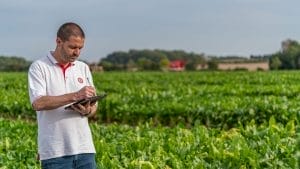
Fodder beet’s feed value at 78% digestibility and 13MJ/kg of dry matter is a valuable addition to any dairy ration.
Kale might have been out of fashion. “But not anymore,” adds Mr Spence. “Here again, new varieties with improved feed value have brought the crop back into the spotlight.”
He highlights Bombardier – a relatively new kale variety with a nutritious stem and leaf with 72% digestibility in UK trials and 17% crude protein It’s sown between April and June so it can follow first cut silage and provide a valuable break crop in the grass rotation.
“A kale crop can slot into the plan for many grazing herds. It’s fast-growing so cattle can strip graze it as a buffer feed in mid-summer to take the pressure off the grass.
But it has a long shelf-life too, so it’s a useful crop for youngstock and dry cows in autumn and winter. In either situation it can be used as a break crop and followed with a grass reseed. Break crops between grass crops are increasingly important in breaking the pest cycle and improving productivity of grass leys.”
Forage rye has been particularly popular this autumn – 2023, with crops following harvest or early maturing maize varieties. It can be sown until late October and is ready for cutting or grazing in early spring, even before Italian ryegrass.
A crude protein content of 12% and an ME of 10MJ/kg DM makes it an ideal forage for late lactation or dry cows, or youngstock. And once finished, the field can go back into maize or a spring reseed.
“A crop of rye will provide a valuable feed to eke out silages and it’s also a great crop to mop up residual nutrients and maintain soil health. The only caveat maybe sowing in a very wet autumn, but most farmers were in time this year, as the first half of autumn was warm and dry. So again, a flexible approach is needed and the will to act if conditions are right.”
Grass is king
Grass is the most important forage for most dairy farmers, and increasing its productivity and feed value should be on-going. This includes regular reseeding and taking advantage of improved grass seed mixtures and always selecting a grass seed mixture to suit the system and purpose of the crop, as well as the growing conditions and soil type.
“There are new varieties, improved grass seed mixtures and enhancements to match changing conditions. So farmers should seek advice and look for mixtures with proven trial results and good performance on UK farms and be discerning in their choices,” adds Mr Spence.
Limagrain trials in 2020 highlight the benefit of reseeding and of selecting proven mixtures. Table 1 highlights the productivity of a one year old ley and a four year old ley. The additional 45% of energy produced by the new sward was equivalent to more than 6,000 litres of milk (assuming 5.3MJ/litre).
Table 1
|
|
Age of Sward (Years) |
|
|
|
|
4 |
1 |
Benefit of New Ley |
|
1st Cut DM yield (t/ha) |
3.57 |
6.06 |
+2.49 |
|
ME (MJ/kg DM) |
10.8 |
11.9 |
+1.1 |
|
ME yield (MJ/ha) |
38,669 |
72,072 |
33,403 |
Source: Limagrain UK Trials, May 2020
“The additional energy yield value from younger leys will increase the proportion of milk yield from home-grown forage, reduce bought-in feed costs and this will justify the cost of the reseed. Depending on the age and quality of the ley, estimates suggest the additional yield in year one of a reseed will cover its cost.”
 Trials have also demonstrated the benefits of improved mixtures with proven feed values. LGAN is the accreditation given to LG mixtures that meet the company’s combined yield and feed value criteria, and table 2 shows the performance range at first cut of the one-year-old mixtures on trial.
Trials have also demonstrated the benefits of improved mixtures with proven feed values. LGAN is the accreditation given to LG mixtures that meet the company’s combined yield and feed value criteria, and table 2 shows the performance range at first cut of the one-year-old mixtures on trial.
“The best performing mixture at first cut was LGAN Quality Silage, which produced more than 7t/DM of 12.5ME silage. The trial year, 2020, was particualrly dry, so these results demonstrate the big gains that can be made by using high-feed-value mixtures.”
Table 2
|
|
Max |
Min |
Range |
|
DM yield (t/ha) |
7.81 |
4.78 |
3.03 |
|
ME (MJ/kg) |
12.5 |
11.6 |
0.9 |
|
ME yield (MJ/ha) |
93,703 |
55,384 |
38,319 |
Stock up on clover
A forage outlook for 2024 wouldn’t be complete without highlighting the benefits of clover in grass leys.
“Any new reseed with clover in the mix or overseeding a ley with clover is eligible for an annual payment of £102 a hectare under the new SFI action NUM2 (Legumes on improved grassland),” says Mr Spence.
“This more than pays for the seed, and it brings all the benefits in soil health, nitrogen fixing and feed value. And in mid-summer, the clover provides good feed value when perennial ryegrass growth slows down.”
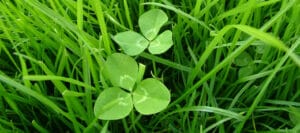 A lot of focus is also being placed on multispecies leys, with sustainability schemes encouraging dairy farmers to integrate them into their systems. “There are payments available under the new SFI scheme for sowing multispecies leys which will be worth investigating in the forage planning for 2024.
A lot of focus is also being placed on multispecies leys, with sustainability schemes encouraging dairy farmers to integrate them into their systems. “There are payments available under the new SFI scheme for sowing multispecies leys which will be worth investigating in the forage planning for 2024.
“There is a lot of considerations and it’s worth having an open mind to new ideas and options.”
FORAGE PLANNING POINTERS
- Plan to increase output from homegrown forages
- Throw the net out wider – look at all the options
- Have a flexible plan and be agile to adapt to the season’s weather conditions
- Have a robust and productive rotation for the farm – no one rotation fits all
- Use a forage break crop between grass reseeds
- Look at improved forage crop varieties with better protein and energy contents
- Clover in grass leys is a must
- Improving grass quality and feed value is on-going
- Carefully select grass seed mixtures with proven feed value

































